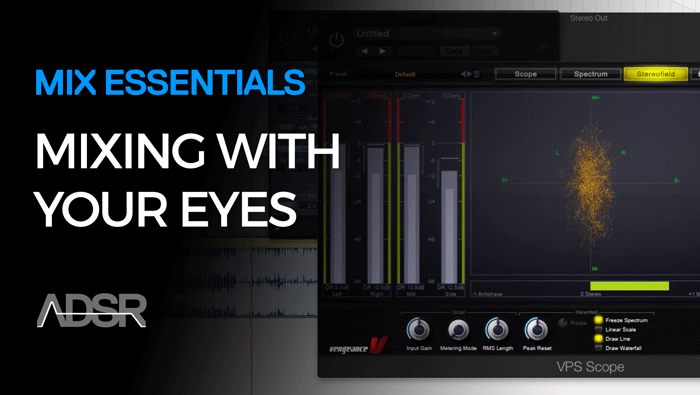
Mixing With Your Eyes – How To Use Metering Plugins
Learn How To Use Metering And Visualizing Plugins To Achieve Accurate Results
I know what you might be thinking, why would you ever mix with your eyes when music and mixing is an auditory experience. Even though this idea may seem counterintuitive, it is actually one of the best ways to improve the quality of your mixes.
So why not use one of the other senses to help mix music more accurately?
In this course, Echo Sound Works shows you how to use metering plugins to improve the quality of your mixes. At over an hour long (broken up into 8 individual sections) you will learn how to read and use numerous types of metering plugins to help with low end frequencies, Stereo Imaging and mix fullness.
Learn Professional Techniques – Improve Every Mix You Work On With Expert Skills!
The Fundamentals
PART 1 – INTRODUCTION – Introduces the ideas behind using metering and visualizing plugins.
PART 2 – TYPES OF METERING PLUGINS – This section details the various types of metering plugins that exist and some of the name brands.
PART 3 – REFERENCE TRACKS – A huge part of accurately missing with your eyes is to use a reference track that you can trust as a guide.
Did You Know?
Your ears are deceiving you. Not on purpose, but they are. A lot of this comes down to your listening environment.
Did you know that parallel walls are bad for mixing music? Did you know that having too big of a monitor size in comparison to your room is bad? Did you know that most project and home studios don’t do nearly enough broadband bass absorption and diffusion? Did you know that unless you have a sub woofer (which means your room needs even MORE treatment) that you have no way of accurately reproducing frequencies under 35 Hz?
Discover how to overcome these common challenges with tips and techniques you can start using straight away.
Work Smarter And Faster – Gain More Control over your mix
Meters & Mixing
PART 4 – PEAK VS RMS METERS – This video discusses how to use these two metering types to get a fuller mix.
PART 5 – PHASE CORRELATION METERS – This part will show you how to use correlation meters to accurately gauge how many phasing issues may be in your mix. Great tips if you’re trying to make your mixes more mono compatible.
PART 6 – STEREO IMAGING – This section will show you how to see if your mixes are wide enough.
PART 7 – LOW END METERING – This video is great for those who do not have a sub woofer. This will show you how to use metering plugins to see whats potentially wrong with your low end.
PART 8 – MIX FULLNESS – Learn how to put it all together to make full use of the stereo field and create a dynamic, punchy mix.
Overcome Your Shortfalls And Achieve Professional Results Today
The ear (like all human senses) is a very subjective tool. Not all ears can hear the same frequencies, not all ears can define pitch differences in similar ways and not all ears are in the same listening environment. This is why mixing music is so hard. Lets face it, getting a mix that sounds great on your monitors, head phones, computer speakers, car stereo and ear buds is a daunting task.
About Your Tutor
Echo Sound Works is a sound designer and music producer and one of ADSR’s lead tutors for massivesynth.com and sylenthtutorials.com
He is the creator of the best selling sound sets Massive Beast V.1, Melbourne Anthems, EDM Drops V.1 and Future EDM V.1.
He has produced music in multiple genres including EDM, singer songwriter and pop ands had his music placed everywhere from VH1 and MTV to ABC Family and Lionsgate.
Professional instruction from a working producer. It’s like having your own private tutor!
Reviews of this product
Reviews require cookies, click here to change cookie settings.


